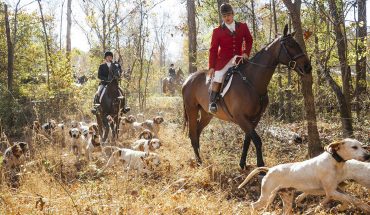by Andrew Kenney
photographs by Geoff Wood
The wooded shoreline of Lake Wheeler is still dark this early, but the water is sunlit, and young rowers already are hauling their long pencil-boats down to the water.
Like everything in the sport of crew, this first step has to be done in something close to synchronicity. That’s harder on land than water. The Triangle Rowing Club’s eight-man hulls are ungainly ashore, and Coach Will White looks on with worry as teenage girls hoist a banana-yellow shell onto their skinny shoulders.
“Watch that end – get it even,” White warns his junior team.
It’s a Saturday morning halfway through September, only a couple of weeks into a new season for this regional rowing group. Many of today’s rowers are brand new to crew – a far cry from the muscled athletes who pull Ivy League boats down the Charles. But there’s no room for a coach on these carbon-fiber hulls, so already the emphasis is self-sufficiency.
All White can do is plead – “Careful!” – as his young protégés handle a few of sporting’s most expensive pieces of equipment. He knows that every ding on the hull will slow his athletes, and he’s chasing perfection.
That’s been the Triangle Rowing Club’s mission for five years and 10 seasons, since Raleigh Charter High School’s team joined with the Wake Rowing Club to form a new regional team. Now more than 200 middle and high schoolers have dipped oars with the club. They’ve competed in Massachusetts, Georgia, Tennessee, and South Carolina, and they’ve come close to a bid at nationals. White, 27, coaches full-time – and by this day in September the first regattas already loom close. Early risers
Early risers
There are a few boats skimming the water by the time the Triangle Rowing crews reach the dock. The N.C. State University team is cruising mid-lake, and a few older rowers have launched single-person sculls from the dock. Their gentle wakes are the only waves on the water. These are conditions good enough to wake teenage rowers at ungodly hours on weekends.
“On Saturday mornings, it’s almost meditative,” says Tristan Watson, 17, now in his fourth year with the area’s only teenage rowing team. When the water’s perfectly still, “we call it glass. It almost feels like a shame – we go out there and scar it.”
The boats are ready for the day’s practice just before 8 a.m. White’s watching from the dock in his usual TeVa sandals and athletic shorts, keeping quiet as his crews finish their pre-water dance. Now the boats are fully in the command of their coxswains, the athlete-coaches whose role is unique to rowing.
Take Colin Whiteford, 13, a blond boy who’s more tween than teen. He’ll ride today on a boat of eight girls, shouting commands to rowers whose head start on puberty has put each a head above him. He’s on the job in part because coaches want tall rowers and short coxswains. This doesn’t faze Colin.
“Roll down. Ready, slow,” he orders, and the girls splash their long boat off the wooden planks.
Pulled aside for an interview, he seems to see nothing unusual about his gender-line-crossing role. It’s his job, he says, to keep this operation rowing. He’s essentially the captain of the boat, in charge of timing, steering and morale. Then he and his rowers are off, leaving shorts and sneakers on the dock.
There’s a comical contrast between the graceful rowing hulls and Coach White’s ungainly motorboat.
Even his greenest crews fairly glide along their rippling courses, slipping their paddles in and thrusting back along their seats’ tracks, each paddling only every few moments. Meanwhile White’s outboard motorboat rears back in the water, breaking the still with a bubbling roar as it pulls alongside the rowers.
Still, Coach doesn’t need a megaphone. He can whistle clear across the lake, and he seems to just project his commands directly to his rowers’ ears.
“Right now, we are not a technically sound crew. We have a long way to go,” White calls to the varsity girls’ boat as they slow.
Then he tells individual rowers how to bend legs and backs and arms, having surveyed the entire boat’s form. He saw from a distance how tiny mis-timings are affecting the seventh seat. He can tell that the novice boat on the other side of the lake is rowing well.
“There’s an individual level of perfection,” White explains. “But you’ve got to match that up with your entire boat, or you’re not going anywhere.”
The coach has been rowing on Lake Wheeler, six miles south of downtown Raleigh, for a decade – first with the Raleigh Charter team as an athlete, then with N.C. State, and now as coach. He knows it’s calm on Saturday mornings, he knows the distance from the dam to the bridge, and he has memorized the currents through the shallow spots and the open stretches. “A lake like this,” he says, “you need to know a lot.”
White’s high school alma mater, Raleigh Charter, was among the early Southern adopters of the sport. Like lacrosse, rowing has had to fight basketball, football, baseball and soccer for athletes. Coaches have to gin up tens of thousands of dollars for boats, and competitions are limited to just a handful of races on rivers up and down the Eastern seaboard.
These costs force teams like Triangle Rowing, formed in 2008, to operate regionally instead of locally. Still, the club’s looking at its best year since its founding, with more than 60 kids on the roster this year. Many are in their sixth or seventh seasons – long enough to form a love-hate relationship with the notoriously painful, repetitious strokes at the heart of the sport.
“Once you get the technique down, it’s about pulling until you basically die,” says Patrick Powers, 15, back ashore and half-joking.
“You shouldn’t really like rowing. It’s painful and you’re out there a long time,” adds Tristan Watson.
Yet there’s something that keeps the athletes coming back, and that draws in their friends and younger siblings with each year’s crop of newbies. They call it “swing,” one coach says: the elusive moment, perhaps a few seasons in, when a team is suddenly flying across the water, all 16 arms doing their part.
“You can definitely feel it. You can feel when they are in sync,” says Laura Steckbeck, a 17-year-old girl who coxswains a varsity boys’ boat.
Huvra Mehta, 17, of Cary, came late to the sport – the second day of this season, specifically. She was tired of playing soccer on a team where she felt singled out for criticism by teammates whenever her squad fell short.
Rowing depends no less on the individual – a bad rower is deadweight, literally. But somehow Mehta finds this easier – each rower’s role is so elemental that there are no excuses to be made, yet the team is so conjoined that she feels less intimidated.
“It’s brilliant,” she says. “You feel so accomplished getting it right – even if it’s only for two or three strokes.”






